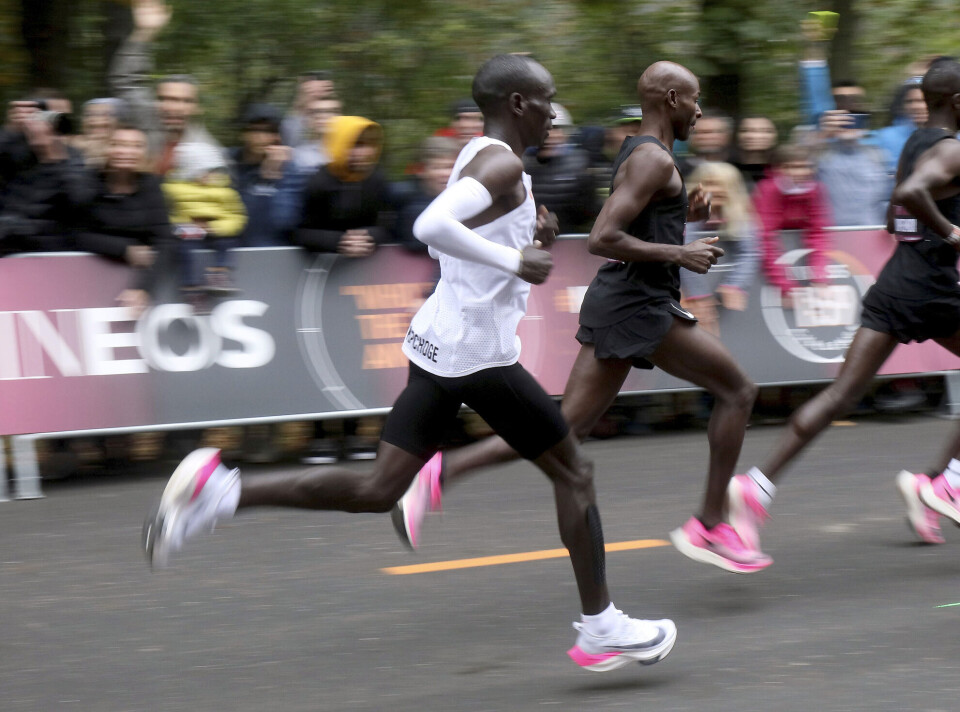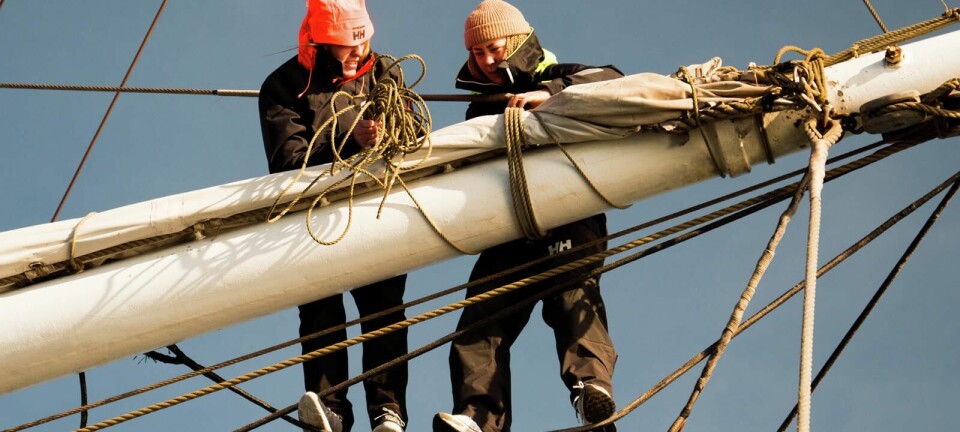THIS CONTENT IS BROUGHT TO YOU BY The Norwegian School of Sport Sciences - read more

‘Supershoes’ may help you run faster
New research further supports claims that so-called 'supershoes’ can reduce your metabolic energy cost when running.
The running shoe industry is a multi-billion dollar industry striving to find shoe designs that help people run faster. Over the past five years, many new world records in long-distance running have been set by runners using these so-called 'supershoes'.
We have asked our experts in biomechanics, Hannah Rice and Amelie Werkhausen. They have conducted studies on these very shoes and provide answers to the questions that are currently on the minds of many recreational runners.
What do we know about these shoes? Does research show that runners perform better with these new shoes?

These supershoes, also referred to as ‘technologically advanced running shoes’, combine a carbon fibre plate with a soft and resilient midsole.
Ran faster and used less energy
One of the most important research papers in this area was published by Hoogkamer and colleagues in 2017. They showed that running in Nike’s Zoom Vaporfly shoe compared with two other popular marathon shoes resulted in a four per cent reduction in the metabolic energetic cost of running.
In other words, running at a given speed with these shoes required, on average, four per cent less oxygen than doing so with the competing shoes that were available at the time.
This means that an athlete can run faster with the same energy expenditure using the new shoes. In fact, they observed a reduction in energy cost in all of the 18 high-level runners who participated.
However, only high-level male runners were included in the study. Researchers were uncertain whether the shoes would also be beneficial for recreational runners and female athletes. Subsequent studies have since supported these initial findings, including in other shoe brands.
What have we done at NIH in this area?
Rice and Werkhausen wanted to see whether supershoes also reduce metabolic energy use in recreational runners, and in females as well as males.
They also added a new measurement of bone loading in the tibia bone because they are interested in the risk of injury to this bone in runners. The tibia is your shin bone.

Their findings are new and have not yet been reviewed or published. They tested 19 recreational male and female runners on a treadmill in the laboratory.
They found that participants used, on average, three per cent less metabolic energy when using supershoes compared to a more traditional long-distance shoe.
Reduced stress on the shin bone
Additionally, the researchers' estimates of bone loading showed reduced loading in the tibia bone when running in supershoes compared to traditional shoes. This could reduce the risk of injury to that bone.
Rice and Werkhausen also asked the runners to assess how strenuous it felt to run in different pairs of shoes.
From this, they found that runners on average felt it was easier to run in supershoes.
The two researchers note that it is important to recognise that participants in the study experienced different effects. Differences in energy cost ranged from a two per cent increase (worse performance) to a seven per cent decrease (better performance) in energy cost when running in supershoes.
They explain that it seems that the properties of the shoe allow it to return more mechanical energy. In other words, the shoes act more like a spring.
If the shoe can return more energy, the muscles are not required to generate so much force and this saves metabolic energy. When muscles generate force, this requires a lot of metabolic energy.
What is the secret?
It is not entirely clear yet what contributes to this energy return. The shoes have a curved carbon fibre plate, a midsole made of foam, and a specific shape that is different to many previous marathon shoes.
It does not seem like the carbon fibre plate alone creates the supershoes' advantage. Researchers Healey and Hoogkamer demonstrated this in a 2022 study by cutting the carbon fibre plate in the Nike Varpofly 4% to reduce the plate’s effectiveness. They found that it did not influence the energy cost of running.
Rice and Werkhausen therefore believe that energy storage in the midsole foam may be an important feature, as well as how the different features interact.
No guarantee for effectiveness
Based on what the researchers have seen so far, it seems that the shoes may help people complete a long-distance run faster or run longer at a given training pace.
The long-term effects of using these shoes are still unknown.
These shoes have proven to be effective for both elite and recreational runners, but each individual experiences different effects. Therefore, Rice and Werkhausen can't guarantee that they will help you run any faster.
The researchers note that the shoes are expensive compared to regular running shoes, but it is hard to put a price on the value of being able to run faster, longer, or enjoy running more.
References:
Hoogkamer et al. A Comparison of the Energetic Cost of Running in Marathon Racing Shoes, Sports Medicine, 2017. DOI: 10.1007/s40279-017-0811-2
Healey, L.A. & Hoogkamer, W. Longitudinal bending stiffness does not affect running economy in Nike Vaporfly Shoes, Journal of Sport and Health Science, vol. 11, 2022. DOI: 10.1016/j.jshs.2021.07.002

This content is paid for and presented by The Norwegian School of Sport Sciences
This content is created by The Norwegian School of Sport Sciences' communication staff, who use this platform to communicate science and share results from research with the public. The Norwegian School of Sport Sciences is one of more than 80 owners of ScienceNorway.no. Read more here.
More content from The Norwegian School of Sport Sciences:
-
Perfectionists are more likely to suffer from mental health problems
-
Helene has abdominal separation, but can still lift heavy weights
-
Male dominance in Norwegian sport: Top officials depend on a ‘ground crew’ at home
-
Do you have to operate, or is rehabilitation enough to treat an ACL injury?
-
Simple changes increase your speed in the tracks – and in other arenas
-
New measures to prevent eating disorders




































